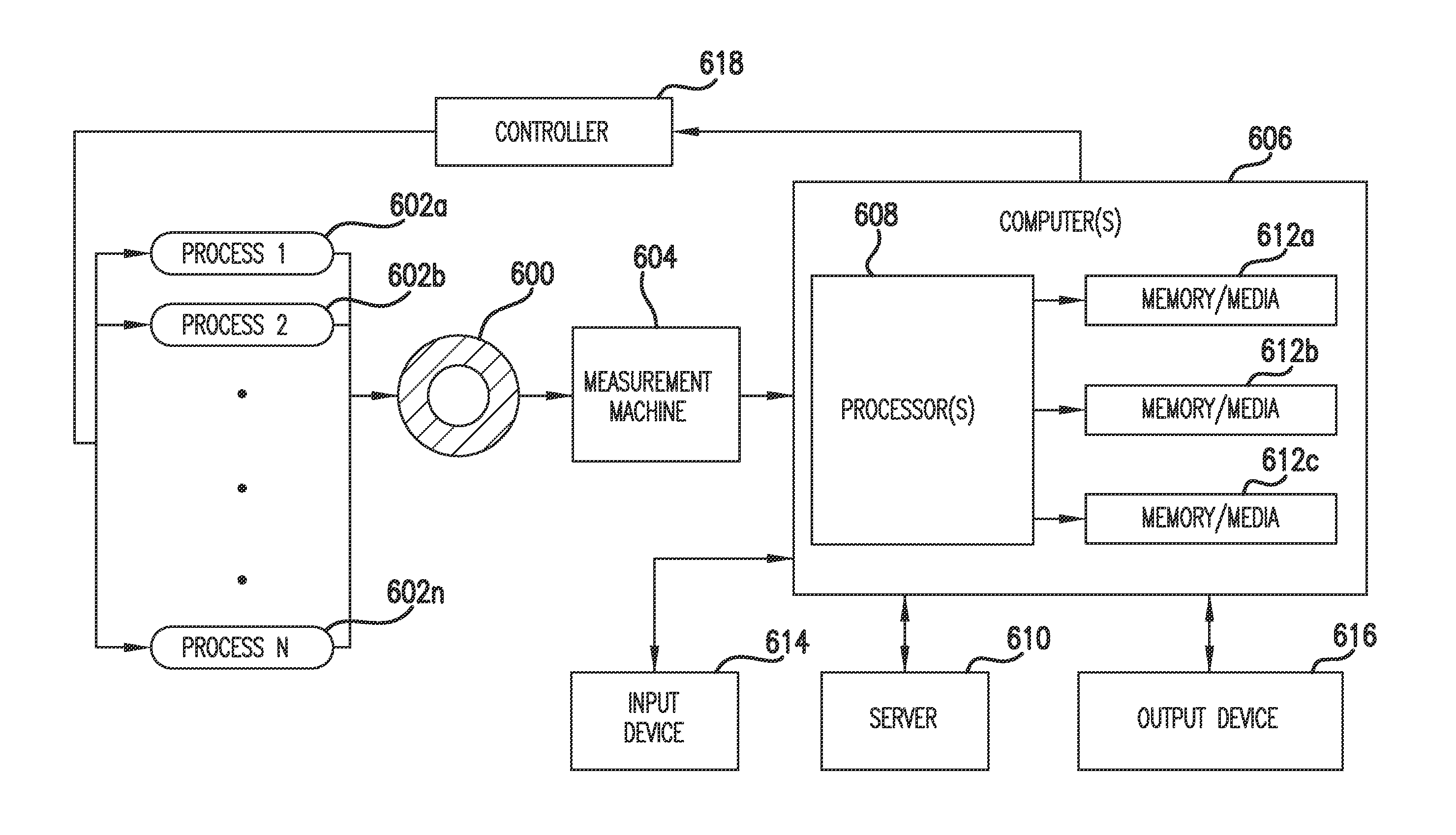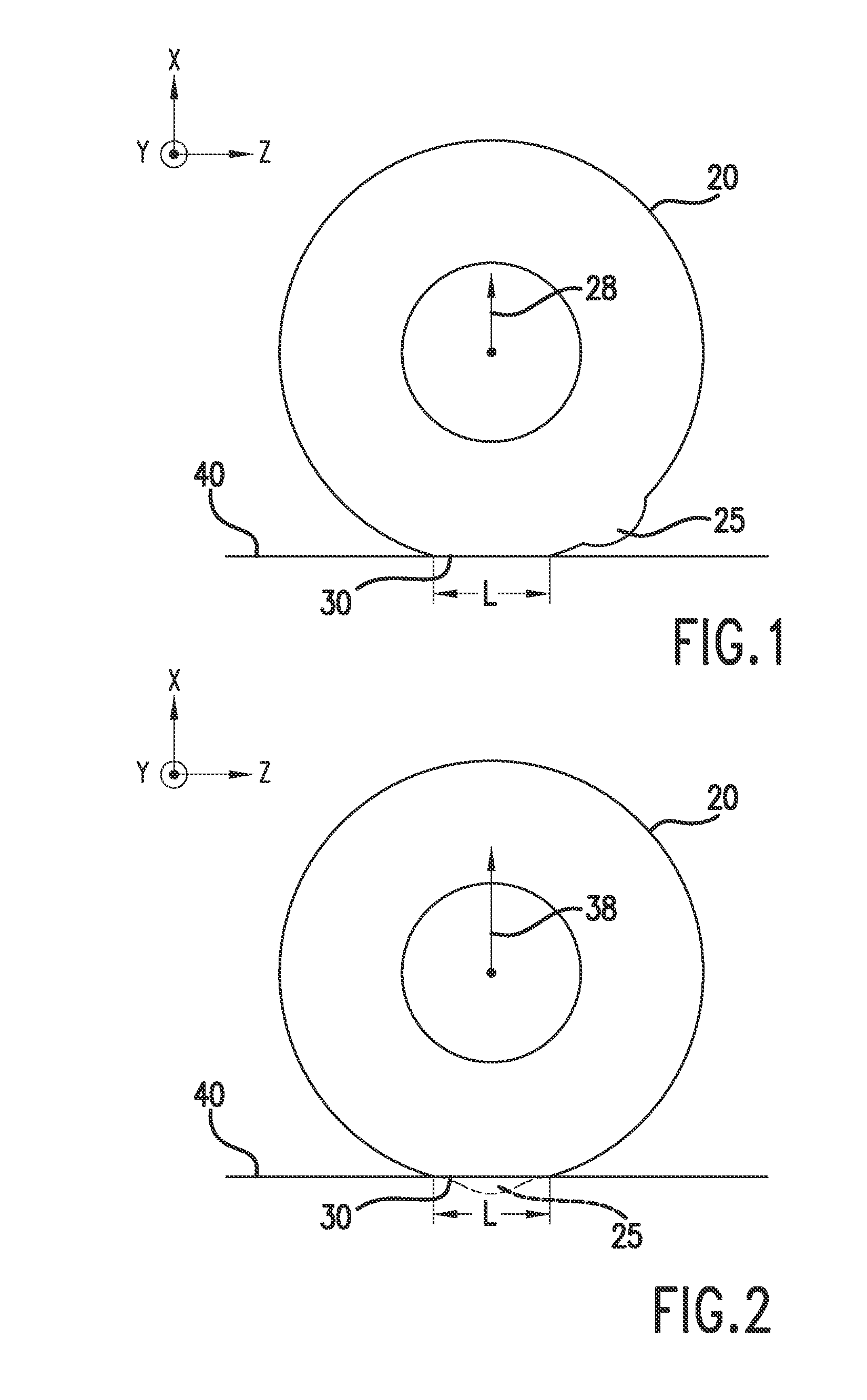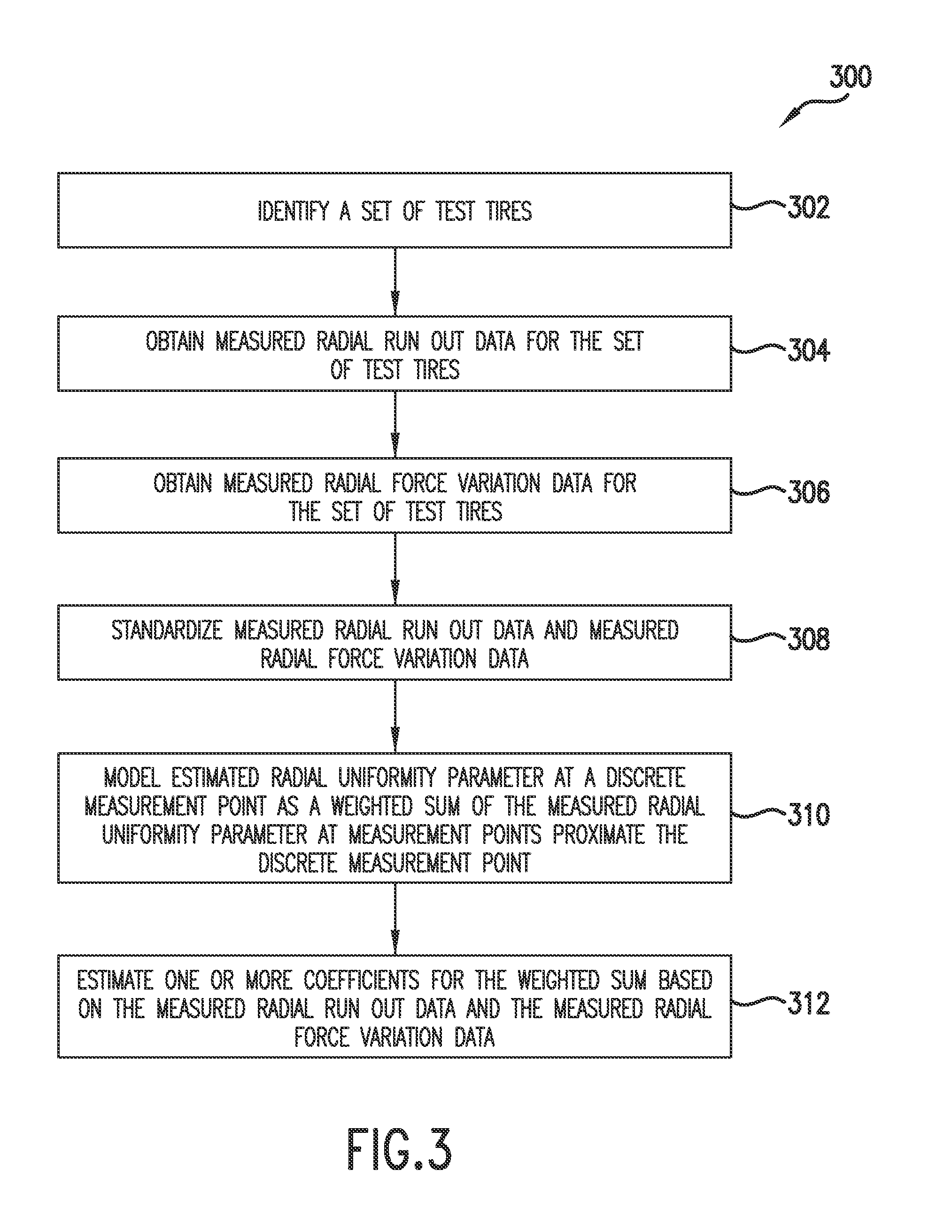Tire uniformity improvement using estimates based on convolution/deconvolution
a tire and estimate technology, applied in vehicle tyre testing, roads, instruments, etc., can solve the problems of tire non-uniformity, tire non-uniformity is important, and the non-uniformity present in the tire structure produces periodic-varying forces, so as to improve the uniformity of the tir
- Summary
- Abstract
- Description
- Claims
- Application Information
AI Technical Summary
Benefits of technology
Problems solved by technology
Method used
Image
Examples
example
[0071]Radial run out data for a center track as well as radial run out data for three tracks were obtained for a set of test four tires. Radial force variation data were obtained for the set of test tires. A first convolution model was generating in accordance with aspects of the present disclosure using the radial force variation data and the radial run out data for the center track. A second convolution model was generated in accordance with aspects of the present disclosure using the radial force variation data and the radial run out data for three tracks. Coefficients for the first and second convolution models were estimated using a regression analysis. Table 1 below compares the R2 values (coefficient of determination) and the RSME values (Root Mean Squared Error) of the first convolution model and the second convolution model.
TABLE 1% R2% RSMERSMERSMEGain forGain forR2 CenterCenterR2 ThreeThreeThreeThreeTireTrackTrackTrackTrackTrackTrackTire 153.84%1.142565.89%.9947522.4%12.9...
PUM
 Login to View More
Login to View More Abstract
Description
Claims
Application Information
 Login to View More
Login to View More - R&D
- Intellectual Property
- Life Sciences
- Materials
- Tech Scout
- Unparalleled Data Quality
- Higher Quality Content
- 60% Fewer Hallucinations
Browse by: Latest US Patents, China's latest patents, Technical Efficacy Thesaurus, Application Domain, Technology Topic, Popular Technical Reports.
© 2025 PatSnap. All rights reserved.Legal|Privacy policy|Modern Slavery Act Transparency Statement|Sitemap|About US| Contact US: help@patsnap.com



